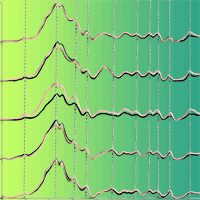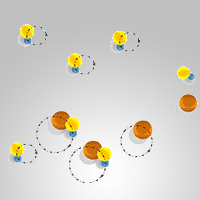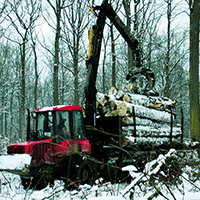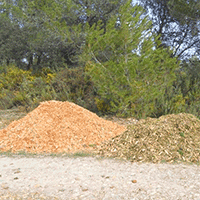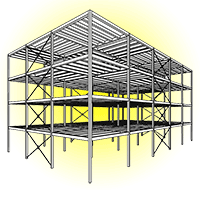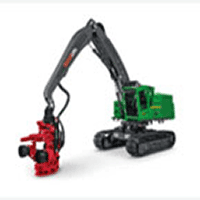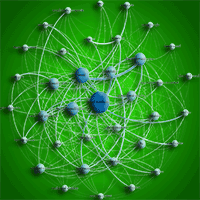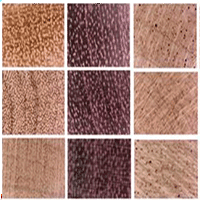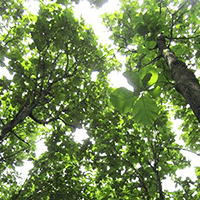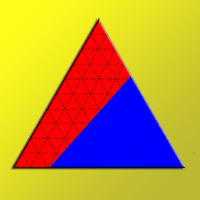
Energy and environmental profile comparison of TMT production from two different companies - a Spanish/Portuguese case study
José Ferreira (1) , René Herrera (2), Jalel Labidi (2), Bruno Esteves (1), Idalina Domingos (1)
iForest - Biogeosciences and Forestry, Volume 11, Issue 1, Pages 155-161 (2018)
doi: https://doi.org/10.3832/ifor2339-010
Published: Feb 07, 2018 - Copyright © 2018 SISEF
Research Articles
Collection/Special Issue: COST action FP1407
Understanding wood modification through an integrated scientific and environmental impact approach
Guest Editors: Giacomo Goli, Andreja Kutnar, Dennis Jones, Dick Sandberg
Abstract
Life Cycle Assessment (LCA) is a technique for assessing the environmental aspects and potential impacts associated with a product and has been increasingly used to identify processes or stages in the wood chain with a high environmental impact or to highlight areas where environmental information is unknown. The main aim of this study was to quantify and compare the environmental impacts and the energy used for the production of one cubic meter of Thermally Modified Timber (TMT) by two different companies, one in Spain and the other in Portugal, using the LCA methodology. The LCA study was developed based on ISO 14040/44 standards. The inventory analysis and, subsequently, the impact analysis were performed using the LCA software SimaPro8.1.0.60. The method chosen for the environmental impact assessment was ReCiPe, and for energy use the Cumulative Energy Demand method was chosen. The results show that to produce 1 m3 of thermally modified pine timber the Portuguese company used 14.38 GJ of cumulative energy demand, of which 1.92 GJ was nonrenewable and 12.46 GJ renewable, and the Spanish company used a total of 17.55 GJ, of which 2.52 GJ was nonrenewable and 15.03 GJ renewable. The thermally modified pine timber produced by the Spanish company presented the best environmental results for 13 impact categories in comparison to the 5 best environmental results presented by the Portuguese company. From the weighting triangle, we can conclude that the Portuguese pine boards have a lower environmental impact than Spanish pine boards if a high weight (> 40%) is given to resources, while a weight of <80% is given to human health; otherwise the opposite is true. Regardless of the company, the energy used in the thermal treatment process was identified as the main factor responsible for climate change, acidification, eutrophication, photochemical oxidant formation, metal depletion and fossil depletion. This has to be expected as the treatment is based on heat production and no chemicals are added during the heat treatment process. The round wood production was identified as the leading process responsible for ozone depletion and also presented remarkable contributions to eutrophication and photochemical oxidant formation.
Keywords
Authors’ Info
Authors’ address
Bruno Esteves
Idalina Domingos
Centre for the Study of Education, Technologies and Health, Campus Politécnico, 3504-510 Viseu (Portugal)
Jalel Labidi
Chemical and Environmental Engineering Department, University of the Basque Country, 20018 San Sebastian (Spain)
Corresponding author
Paper Info
Citation
Ferreira J, Herrera R, Labidi J, Esteves B, Domingos I (2018). Energy and environmental profile comparison of TMT production from two different companies - a Spanish/Portuguese case study. iForest 11: 155-161. - doi: 10.3832/ifor2339-010
Academic Editor
Giacomo Goli
Paper history
Received: Dec 30, 2016
Accepted: Nov 21, 2017
First online: Feb 07, 2018
Publication Date: Feb 28, 2018
Publication Time: 2.60 months
Copyright Information
© SISEF - The Italian Society of Silviculture and Forest Ecology 2018
Open Access
This article is distributed under the terms of the Creative Commons Attribution-Non Commercial 4.0 International (https://creativecommons.org/licenses/by-nc/4.0/), which permits unrestricted use, distribution, and reproduction in any medium, provided you give appropriate credit to the original author(s) and the source, provide a link to the Creative Commons license, and indicate if changes were made.
Web Metrics
Breakdown by View Type
Article Usage
Total Article Views: 48631
(from publication date up to now)
Breakdown by View Type
HTML Page Views: 40364
Abstract Page Views: 3073
PDF Downloads: 4226
Citation/Reference Downloads: 17
XML Downloads: 951
Web Metrics
Days since publication: 2868
Overall contacts: 48631
Avg. contacts per week: 118.69
Citation Metrics
Article Citations
Article citations are based on data periodically collected from the Clarivate Web of Science web site
(last update: Mar 2025)
Total number of cites (since 2018): 9
Average cites per year: 1.13
Publication Metrics
by Dimensions ©
Articles citing this article
List of the papers citing this article based on CrossRef Cited-by.
References
Sustainability of construction works - Environmental product declarations - Core rules for the product category of construction products. EN 15804:2012+A1:2013, European Committee for Standardization, Brussels, Belgium, pp. 66.
Gscholar
Durability of wood and wood- based products - Definition of use classes - Part 1: General. European Committee for Standardization, Brussels, Belgium, pp. 14.
Gscholar
Durability of wood and wood-based products. Natural durability of solid wood. Part 2: Guide to natural durability and treatability of selected wood species of importance in Europe. European Committee for Standardization, Brussels, Belgium, pp. 44.
Gscholar
Wood modification by heat treatment: a review. Bioresources 4 (1): 370-404.
Gscholar
Life cycle inventory of softwood production in the Portuguese forest. In: Proceedings and Abstracts of the IUFRO Conference, Division 5, Forest Products. Estoril Congress Centre (Lisbon, Portugal) 8-13 July 2012. International Union of Forest Research Organizations, Vienna, Austria, pp. 157-158.
Gscholar
Life cycle inventory of hardwood (Eucalyptus) production in the Portuguese forest. In: “Towards Forest Products and Processes with Lower Environmental Impact” (Caldeira F eds). E-Book, University Fernando Pessoa, Porto, Portugal, pp. 55-62.
Gscholar
Life cycle assessment of thermally treated and untreated maritime pine boards: a Portuguese case study. In: Proceedings of “7th European Conference on Wood Modification”. LNEC (Lisbon, Portugal) 10-12 Mar 2014. LNEC, Lisbon, Portugal, pp. 213.
Online | Gscholar
EN ISO 14040:2006. Environmental management - Life cycle assessment - principles and framework. International Standard Organisation, Geneva, Switzerland, pp. 28.
Gscholar
EN ISO 14044:2006. Environmental management - Life cycle assessment - requirements and guidelines. International Standard Organisation, Geneva, Switzerland, pp. 46.
Gscholar
LCA of ThermoVacuum treated softwood timber with comparison to untreated and preserved cladding. In: Proceedings of the 1st COST Action FP1307 International Conference “Life Cycle Assessment, EPDs, and modified wood” (Kutnar A, Burnard M, Schwarzkopf M, Simmons A eds). Koper (Slovenia) 25-26 Aug 2015. University of Primorska, Slovenia, pp. 20-22.
Gscholar
Product category rules according to ISO 14025. Construction products and construction services. The International EPD System. EPD International AB, Stockholm, Sweden, pp. 51.
Gscholar
Recent development of thermal wood treatments: relationship between modification processing, product properties, and the associated environmental impacts. In: Proceedings of the “IAWPS International Symposium on Wood Science and Technology”. Tokyo (Japan) 15-17 Mar 2015, pp. 55-59.
Online | Gscholar
ThermoWood handbook. International ThermoWood Association, Helsinki, Finland, pp. 66.
Gscholar
Life cycle inventories of wood as fuel and construction material. Final Report Ecoinvent 2000 No. 9, EMPA Düdendorf, Swiss Centre of Life Cycle Inventories, Düdendors, Switzerland, pp. 176.
Gscholar

